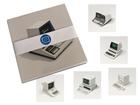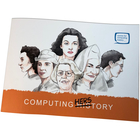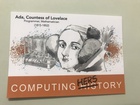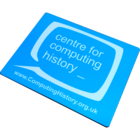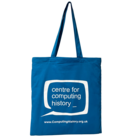
| Home > LEO Computers > LEOPEDIA > Oral & Narrative Histories > Neil Lamming: Interview |
Neil Lamming: Interview
| Home > LEO Computers > LEOPEDIA > Oral & Narrative Histories > Neil Lamming: Interview |
Copyright
Leo Computers Society
Interviewee: Neil Lamming DOB: 1938
Interviewer: Martin Garthwaite
Date of Interview: 31/01/2012
Role in LEO: Programmer, Consultant, Manager
Joined LEO : 1960
Abstract: As a mathematics graduate Neil chose LEO when offered jobs in the computing industry. Started work at Hartree House working on Army Payroll, joined team at Renold Chains and subsequently recruited to join Peter Gyngell in Australia. Rapid rise post merger to become Managing Director of ICL Australia at age 37. Left company to work on executive recruitment and retired at age 50. Copyright: Neil Lamming and LEO Computers Society.
Restrictions: None known
(Recording to be added.)
Date : 31st January 2012Transcript : LEO COMPUTERS LIMITED - Oral History Project Interview with Neil Lamming by Martin Garthwaite via telephone on 31st January 2012 Martin Garthwaite: Neil thank you very much for agreeing to be interviewed as part of the LEO Oral History Project. As you know we are talking to many people that were involved in the early days of Lyons and the LEO Computer, collecting their thoughts and recollections of their time working for Lyons and being involved with the LEO Computer and Project. Let me start by asking where you were born and when? Neil Lamming: Yes, I'm a pre-war model. I was born in Cleethorpes in 1938, so I'm now (2012) seventy three. And I left Cleethorpes before I remember it really and always feel that I was brought up in South Yorkshire in Doncaster. But in fact I, my parents moved on to Norfolk when I was fourteen. So I finished my education at the City of Norwich School in Norwich. I then went to Bristol University, taking the Special Honours Mathematics Course. And interestingly I became president of the Mathematical Society at Bristol and as a result met with Doug Comish. Doug came to give a talk to the Mathematical Society, about what was happening in the computer industry in LEO, in Lyons. And so I got to know Doug a little that day, being president I kind of looked after him. And Doug was my kind of bloke, you know, very interested in sport and a top bloke. So when I graduated in 1960 it was pretty natural for me to join LEO. So I joined LEO in 1960. Martin Garthwaite: You were too young to have done National Service by the sounds of things. Neil Lamming: I was one of the first science graduates that weren’t required for National Service. So I was there just at the cusp when National Service wasn't required for science graduates, so I deemed myself to have been fortunate, others may think otherwise. Martin Garthwaite: Going back a little, what was the occupation of your father and mother? Neil Lamming: My mother was a mother with three boys in the family and we were obviously brought up during the war. My father was in the police force and he finished up with the British Transport Commission Police, as an inspector in the police force. I was able to go to university because I was fortunate enough to win a State Scholarship, otherwise probably my parents wouldn't have been able to afford that. Martin Garthwaite: Ah, so in those days it wasn't funded like it is today. You had to apply for a scholarship and if you weren’t successful then you had to pay the fees Neil Lamming: Yes, it was all based on your (A) Level marks and I won a State Scholarship. There was a whole raft of scholarships, State Scholarships, Open University Scholarships, County Major Scholarships and they totally funded my university. Martin Garthwaite: You said finding a career wasn't that difficult for you because you'd met with you had met with Doug Comish and you just dropped him a line I guess when you came to graduation? Neil Lamming: He came as part of a kind of recruitment process, sowing the seeds. He sowed a seed in my mind certainly. And computers were just beginning to happen, because I was also offered positions by Ferranti and by, if I remember correctly, by what became ICT. It was for a mathematics graduate quite a natural place to be looking. Martin Garthwaite: Before you met Doug did you have any aspirations for what sorts of career you wanted to do? Neil Lamming: No, not really. I was fairly keen to avoid teaching, which was where a lot of my friends went. I was thinking possibly about Geophysics, I also thought at one stage about an actuarial career. Norwich Union, of course, were fairly significant in my home town and working in that industry was a possibility. But jobs weren’t so hard to get in those days. Martin Garthwaite: Yes, I would agree. So did your parents have any particular ambitions for you or the careers that they wanted you to go in for? Neil Lamming: Not really, I think I was more influenced by the school and my teachers, The City of Norwich school headmaster was very keen to advise you to go to university and I think he was a bigger influence in that regard than my parents. But my parents were positive about it, positive enough about it there was no negative input but they didn't know a lot about it really. Martin Garthwaite: Were you the first member of your family to go to University? Neil Lamming: Yes I was. I was the oldest of the three boys. My second, my next brother subsequently also went to university, my youngest brother didn't. Martin Garthwaite: So, as part of meeting Doug Comish and learning about LEO, you decided to apply for a position there. Tell us about your early, your, the very first job that you had at Lyons? Neil Lamming: I joined, as I say in 1960. LEO II/5 had just been installed at Hartree House. And my first job was working on the Glyn Mills service bureau job, the army and air force officers’ payroll. The government had just introduced a National Graduated Pension scheme and we had to do a lot of work to accommodate this, with an absolute deadline. I think it was the end of March in 1961. So I was the programmer as part of the Glen Mills team working with people like George McLeman and Mary Blood, or Mary Coombs as she became, and Bernard Pierce. And I would probably have worked on something like that six months when I first joined. And that was quite exciting. Martin Garthwaite: So tell me about the environment and the training that you received once you joined the LEO Group? Neil Lamming: The training was great. The company still was fairly moderate in numbers. I'm not sure but we had a couple of programming officers, one of whom was George McLeman. Mac, sort of ran and one group, if I remember correctly, that Helen Clarke (editor: later married Mike Jackson) ran another. And it was, you know, it was very much a 24/7 kind of environment, we were very motivated by what we were doing. The computer didn't just work nine till five and so we didn't either. It was a very stimulating environment, a good bunch of people, highly motivated and a lot of pride in what LEO was achieving. I really thought myself very fortunate to be there. I started on a training programme, I suppose probably something like four weeks, though I can't remember for sure just how long it was. And interestingly I then helped to give the next training course. So we were thrown pretty well into the deep end, becoming sort of instant experts. It was good fun and I remember on one of the early courses I ran I had some star recruits like Ninian Eadie and Mike Gifford, they were both on training courses that I ran in the very early days; it was stimulating. We were also involved in the whole process for recruiting people, we got people that applied in for a whole day and we gave them a sort of a mini programming course really an Aptitude Test in the one day and judged their aptitude as a result of that. And I certainly gave a lot of these on day Aptitude Tests in the early days as well. Martin Garthwaite: Were they particularly difficult? Neil Lamming: No I don't think so. But it was a new technique to test aptitude , and people were either good at seeing their way through this sort of thing or not so good and I think LEO was very successful in the people it managed to recruit, so it obviously worked well. Of course it may be that we rejected a lot of people who would also have been successful, but certainly the ones that we recruited were very successful. Martin Garthwaite: Going back to your early careers, your first job was programming and training. How did you progress through the organisation? Neil Lamming: When we finished the Glyn Mills project, I was then sent out to the Standard Triumph Motor Company in Coventry, and they had just installed LEO II/8, which was the first magnetic core storage computer that we built. I was sent there to provide support and, so I used to travel up on the M1 on a Monday morning with a colleague, Keith Davies, who was doing the same sort of thing just up the road at Dunlop, in Birmingham. And we went up together on Monday and came back on a Friday night down the M1 and I, I don't know, I spent a couple of months I suppose out at the Standard Triumph Motor Company. Alan Sercombe was their senior programmer, and I worked with Alan. When that finished I went into training on LEO III, and again got involved in giving a number of the training courses to the next recruits to move on to LEO III. My big assignment on the LEO III was for a bureau customer, Renold Chains up in Manchester. Bernard Pierce headed the programming and I was one of his off-siders. Then in the middle of that project people from Shell Australia, their DP Manager and their Programming Manager elect, Cec Lockhart and Chester Jones respectively, came to the UK from Melbourne. Australia hadn't got into computing at that stage, and they were on a world tour to investigate what the future held. They brought with them a pack of punch cards from their IBM punch card system. David Caminer assigned me to write a demonstration programme to analyse their data on the computer and print a report, using their deck of cards. In all this took three weeks or so. It was quite a little programme that had to be written but they were suitably impressed as subsequent events proved! It also aroused my interest in Australia resulting in my applying for a position. The Australian government was just beginning to look at computing and the Commonwealth Statistician, Keith Archer, and the head of DP at the Department of Defence, Dr John Ovenstone, went on a world tour to investigate what was happening in the emerging computer field on behalf of the Australian Government. I met with them and I finished up being offered a job with the Bureau of Census and Statistics in Canberra. So I went to LEO to resign and David Caminer told me that we were in the process of setting up an operation in Australia. If I would stay with LEO until the Renold Chain project was finished they would send me to Australia . They had already recruited Peter Gyngell from one of our customers, Ford Aveley, and they were sending Peter to head up the operation in Australia and Colin Baker had gone-out to head up the programming side. I eventually left the UK in December 1962 arriving in Sydney on January 26th 1963,, with my wife - we had got married in December 1961. And so I went out to Australia to replace Colin and to be the sort of senior programmer in this little start-up operation in Australia. I was actually only with LEO in the UK from mid 1960 until the end of ’62 – two and a half years. And by then I was an ‘expert’! We had an interesting time in Australia setting up the company and winning deals and supporting customers.. Martin Garthwaite: Australia is, is the other side of the planet. It’s a day from anywhere in a fast jet. So how did it work as an organisation? Neil Lamming: There was no email in those days! Indeed anything urgent had to be by international telephone which was very expensive and at an unsocial time at one end, or by telegram. Even telex wasn’t around but came later. When I arrived the company consisted of: - General Manager Peter Gyngell who was a fantastic guy to successfully establish the company - Colin Baker who was about to return to LEO in London - Peter Goodrum who had worked with Peter Gyngell in UK and had come to Australia with the Department of Defence - Tony Casson, an Australian who had worked for LEO in London and had decided to return to Australia - One secretary/admin lady So we were a very small team. We had our first customer, Tubemakers of Australia, they had signed up for a LEO III which was to be delivered later in the year. Tubemakers had a relationship with Stewarts and Lloyd who had installed LEO 11/3 in Corby, which certainly contributed to our getting the order. The arrangement with Tubemakers was for us to buy back time from them for our use, for service bureau operations, demonstrations, training, etc. In fact Tubemakers had selected three of their own people to become their initial programming department. They sent these three people, Graham Smith, Bob Bender and Graham Nichols, if I remember correctly, to LEO in the UK for training. They actually worked in my little programming team on the Renold Chain programmes, again developing my interest in Australia. So when I got to Sydney it was very much about training more people for Tubemakers, providing support to Graham Smith, Graham Nichols and Bob Bender and getting involved with Peter Gyngell in sales campaigns. After I'd been in Sydney for four months or five months, we decided we needed to open an office in Melbourne and Alan Sercombe, who I had got to know at Standard Triumph had decided to join the company and come to Australia, arriving in Melbourne in April 1963.. Alan and I essentially opened an office in Melbourne and we’d only been there a month or two when we, led by Peter Gyngell, signed up two sensational orders: Shell Australia, who were the people I'd done the benchmark for in England six months earlier ordered a LEO III to replace their large IBM punched cars installation, and Colonial Mutual the insurance giant a LEO III to replace their large ICT card system.. This sent a shockwave through the computer industry, little old LEO, only half a dozen people in Australia winning these two major contracts. Alan Sercombe and I went on site at Shell first to find programming staff. We interviewed a whole load of people but there weren’t any programmers in the market place - business programming just had not at that time taken off in Australia. So we had to select a load of people out of Shell who we felt would make programmers, we trained them all, and we wrote all the initial application specifications. Alan really looked after the logistics - the installation, the planning for installing the computer and the operational side and I tended to look after the systems and programming side. I was on site for eighteen months installing the computer until all applications were running successfully on their LEO III/15. At the same time we won the Colonial Mutual order and we recruited Wallace Weaving and Jeff Nicholas, out of LEO UK. They came out to Australia, to Melbourne and they went on site to Colonial Mutual in the same way that Alan and I were on site at Shell. And they were two very successful sites. Again, all very stimulating, it was working twenty four hours a day, flying up to Melbourne to run a test, on the Tubemakers LEO III the only LEO in Australia. They were very exciting and motivating times, with strong social bond developing within the team. At the end of that, after eighteen months there we’d have a few more forays helping Peter Gyngell with sales campaigns. Peter asked me if I would take on responsibility for trying to sell to the Commonwealth Government, and so I moved into sales at the same time trained on System 4 and won three successive tenders with government departments: the Department of Supply, Department of Civil Aviation and Department of Customs and Excise. At that time (1968) ICL was formed.1 I was then appointed Victoria State Manager based in Melbourne in late 1972, Southern Region Manager a year later, and Australian Sales Manager based in Sydney in late 1974, reporting to Managing Director Mike Gifford who had recently been appointed from London. In July 1975, at the age of thirty six, I took over from Mike as Managing Director of ICL Australia. They were exciting times, It was a great time to be in the computer industry which at that time was very much a young man’s industry. I had a wonderful career with a lot of wonderful people. I've mentioned Peter Gyngell, but Peter was a very enthusiastic individual, a big brilliant Welsh man, who did philosophy at university and spent a year at RADA. He did a fantastic job to sell to Shell and Colonial Mutual, against all the international competition. For example the Japanese came into Australia before they went anywhere else in the world; the Americans were all here in force, Honeywell won the first defence business, Control Data won the first Bureau of Census and Statistics contract. We had all sorts of competitors that we’d never heard of in the UK in those days. And for Peter Gyngell to win those two contracts was just amazing. However, it is worth noting LEO did have some credentials with Shell because, their joint marketing company in the UK, Shell Max and BP had been LEO customers, so we did have a little bit of a help there. : But Colonial Mutual was our first insurance company anywhere in the world. Martin Garthwaite: So what sort of jobs were these computers running for Colonial Mutual and Shell respectively? Neil Lamming: I know more about Shell than about Colonial Mutual, but it was essentially sales and logistics and planning, accounting, invoicing, whatever. We weren’t involved at the refinery, so it was really the sales and marketing side. And, so sales recording, invoicing and looking after their dealer network. Martin Garthwaite: So when did you leave ICL/LEO? Neil Lamming: I left ICL in 1988 having been managing director of ICL Australia from 1975 until 1983. I became president of ICL Asia Pacific in 1983, and I did that for five years. And then I left and I went into executive search establishing recruitment for the computing and telecommunications industry, first with Russell Reynolds, and then five years later did the same thing for Spencer Stuart, both international companies. The telecommunications industry in particular was taking off. And they decided that they needed specialist activities to support that. So I set up computing and telecommunications technology practises for both of them. Martin Garthwaite: It seems very different from the work that you were doing at ICL. Why, what attracted you to that, that new, that new career, if you like? Neil Lamming: I got fed up with all the travel that was involved in the Asia Pacific job. I was overseas, for under a five year period, I averaged two overseas visits a month throughout that five year period. And I had four children. I thought that was a bit much. I had just turned fifty and felt I needed to do something a little different. The computer industry wasn't quite as exciting, maybe I'd just got older, but I thought the time was right for me to do something a little different. And this was an opportunity that presented itself, I didn't go out thinking that's what I wanted to do, but some people were very successful in persuading me that that would be a good thing for me to do, and in fact I enjoyed doing it. Martin Garthwaite: The next question is about your work life balance. I think you've just really answered that question. Lots of travel, oversees, not seeing your children or your wife that much. Did this have an effect on your relationships? Neil Lamming: My wife put up with it very well. I guess four children kept her a bit busy as well. I still managed to get into coaching junior sport. I used to play a lot of cricket and stuff in my day and I still managed to coach at junior level and support the kids’ sport. We've now got ten grandchildren, so we were well practised in this business. One more and we’ll beat England at cricket shortly. I think considering the pressures that we had we probably handled it reasonably well. Martin Garthwaite: Was there an equivalent of the Australian Computer Society, and if so were you a member and, did get involved in any of these?... Neil Lamming: I was a Fellow of the British Computer Society and I was also a Fellow of the Australian Computer Society. But I did not have any involvement at all. However, ; the computer industry in Australia got together and formed what is now called the Australian Information Industries Association. And I was the first chairman of that. And that included companies like IBM and Honeywell, Control Data, NCR. Bouroughs, and ICL. I was the first chairman of that, and that has now grown into a strong and vibrant industry body. I was on the Board of that for five or six years. I was also involved for a while as a counsellor with the Australian British Chamber of Commerce, on their advisory Board. And, so did a few other things, got a little bit involved with the Red Cross charitable work and the Salvation Army for a little while and, do these things you have to do. Martin Garthwaite: So when did you finally retire? Neil Lamming: I finally retired when I turned sixty. My wife, a very keen walker, and we've been trying to walk the world ever since. We, I retired early so that I was still fit enough to do some of these things. So we've been round the world, we've walked the Inca Trail and we've done treks in the Himalayas, we've walked in Patagonia, we've walked lots of walks in Europe. We've done the coast to coast walk across England, from Saint Bees over to Robin Hood’s Bay, a hundred and ninety two miles. We've done lots of walking inFrance, we've walked in Cyprus in the mountains there. This year (2012) we’re going walk in the US including rafting through the Grand Canyon. So we’re still doing fairly active things, so I've now been doing that for thirteen, fourteen years. We did three walks last year (2011), we did the Great Glen Way in Scotland, from Fort William up to Inverness. And then we went down and did the King Ludwig Trail, an eight day walk through Bavaria, starting at Lake Starnberg, where they found King Ludwig’s body in the water. We finished up at his folly, the castle he was building near Füssen. And then we spent eight days doing walks around Lake Como. It’s not a bad way of living. Martin Garthwaite: So, in closing, if you have one abiding memory of your time at LEO, what would that be? What was the thing that you remember vividly about your time? Neil Lamming: I think probably the most motivating period and therefore probably the most memorable is that week in Melbourne in 1963, when we got the Shell and Colonial Mutual orders. And that was just crazy, and Peter Gyngell, just sensational. So I think that would be my abiding moment, winning those two. I also enjoyed, I also remember other successes but winning some big contracts in Canberra, particularly the Department of Customs and Excise, that was a big moment as well. But, you know, I, when I was appointed managing director, which came a bit out of the blue. I succeeded Mike Gifford, he’d been sent out, our previous managing director, Cliff Oldham had suffered ill health, so Mike Gifford was sent out to be Managing Director of Australia. And Mike was another LEO guy who I'd known way back and got on well with. But it came as a bit of a shock to find myself Managing Director at age thirty six. I hadn't particular set my design on that, but that was a big moment. I've got a lot of good memories, a lot of good memories. Martin Garthwaite: Well Neil thank you very much for spending the time with me today to talk about your experiences. There's just one small statement that I'd like to read its ‘this interview with Neil Lamming has been recorded by the LEO Computer Society as part of an Oral History Project to document the earliest uses of electronic computers in business applications. Any opinions expressed are those of the interviewee and not of the Society. The copyright of this interview as recorded form and in transcript remains with the LEO Computer Society 2012’. Once again Neil thank you very, very much, it was very interesting to talk to you. 1 Lamming refers to the merger of ICT and EELM to form ICL (International Computers Limited) This exhibit has a reference ID of CH53378. Please quote this reference ID in any communication with the Centre for Computing History. Copyright
|
Click on the Images For Detail
|

